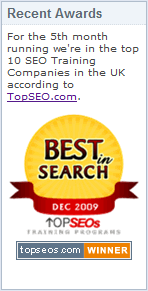Heading tags are the titles and subtitles of our pages, organized within a logical hierarchy for reading. They range from h1 to h6, from highest to lowest importance respectively. The h1 is usually reserved for the page title and used only once. Although this is not a rule, it is reasonable to have only one main title. This also semantically assists our page and code behind it. For the proper website optimisation this is essential.

Reserve h1 for your main keyword and try to create something of value in that space, making it clear what the content is about. The objective is very similar to the Title Tag seen earlier. The difference is that there is no character limit here.
Some interesting features:
- Didn’t use the same content as the Title Tag;
- Used the main leftmost keyword;
- Complemented it with an effect modifier: “apply to your site”.
- Got some consistency between h1 and title, but it is not always possible, and this is not bad, as it gives us space to test different things.
Meta-description
The meta-description, like the title, is HTML markup visible only in code and in search results. It is known for not being a ranking factor, but it has great potential for pages. The Meta description is a complement to the title that provides us with more space to produce arguments that make the user click on our link. Consequently, this would increase the click-through rate, bringing more users to the site. Google displays in the results on average up to 160 characters, so we have a space slightly larger than the title and that should also be well used.
Some tips for creating your meta-description:
- Use variations of the main keyword;
- Reinforce the main message (from the title);
- Make use of the 4 Marketing P’s (Product, Price, Place and Promotion), especially if it is e-commerce;
- Use call-to-actions to attract the click.
Finally, it is important to remember that Google may or may not display the content defined in the meta-description. If he understands that some content on the page is more relevant than the description, he displays it according to the search intent.
Keywords
Quality content is nothing new in SEO and the correct use of keywords in the production process is very important. After defining the focus keyword, position it strategically within the content. Use it on h1, always at the beginning, seeking to generate value for those who enter the page.
Use LSI (Latent Semantic Indexing) words, which are words that convey the same meaning and related to the main subject. That way you can vary the content well and not be restricted to a word, avoiding excessive and repetitive use. Try to fit the focus keyword right at the beginning of the text. Give preference to the first or second paragraph to position it.
And one last tip is simple: write to humans. Every technique and tactic is fundamental to good content, but the user experience is worth more. The text on your page must deliver real value to those who read it. Make sure the answers are clear, without forcing words and without shallow content.
Rich content: video, images, graphics
Content is not just text, on the contrary, the text is just a type. Videos, images, graphics, infographics, ebooks, all are types of content. Complement your page with media that add value to the text . This opens possibilities for your content to be reached not only by traditional search but also by vertical images and videos.

